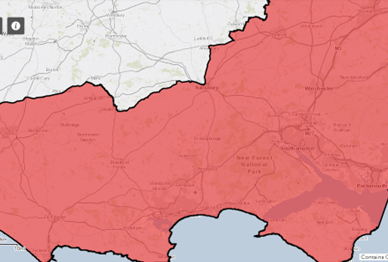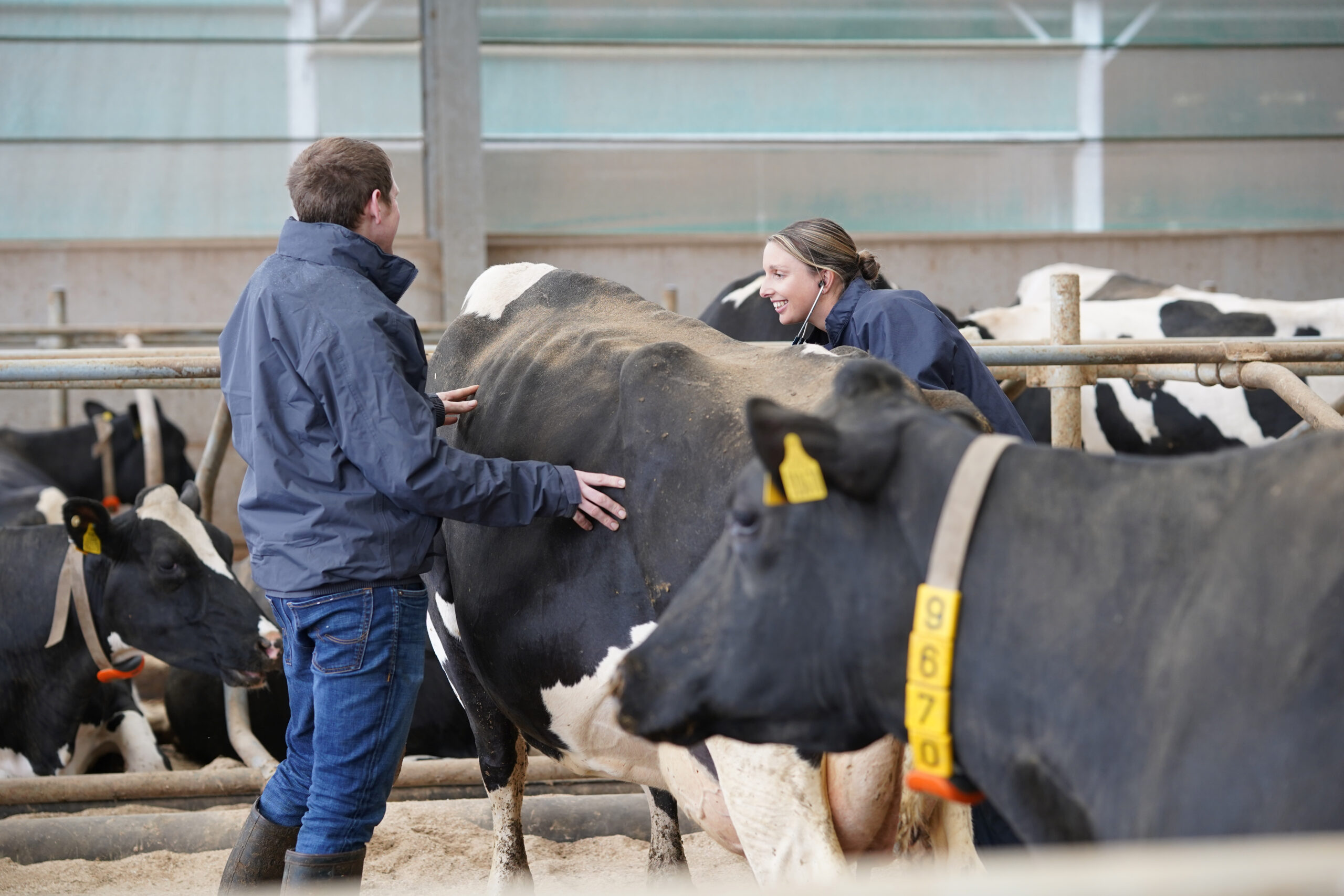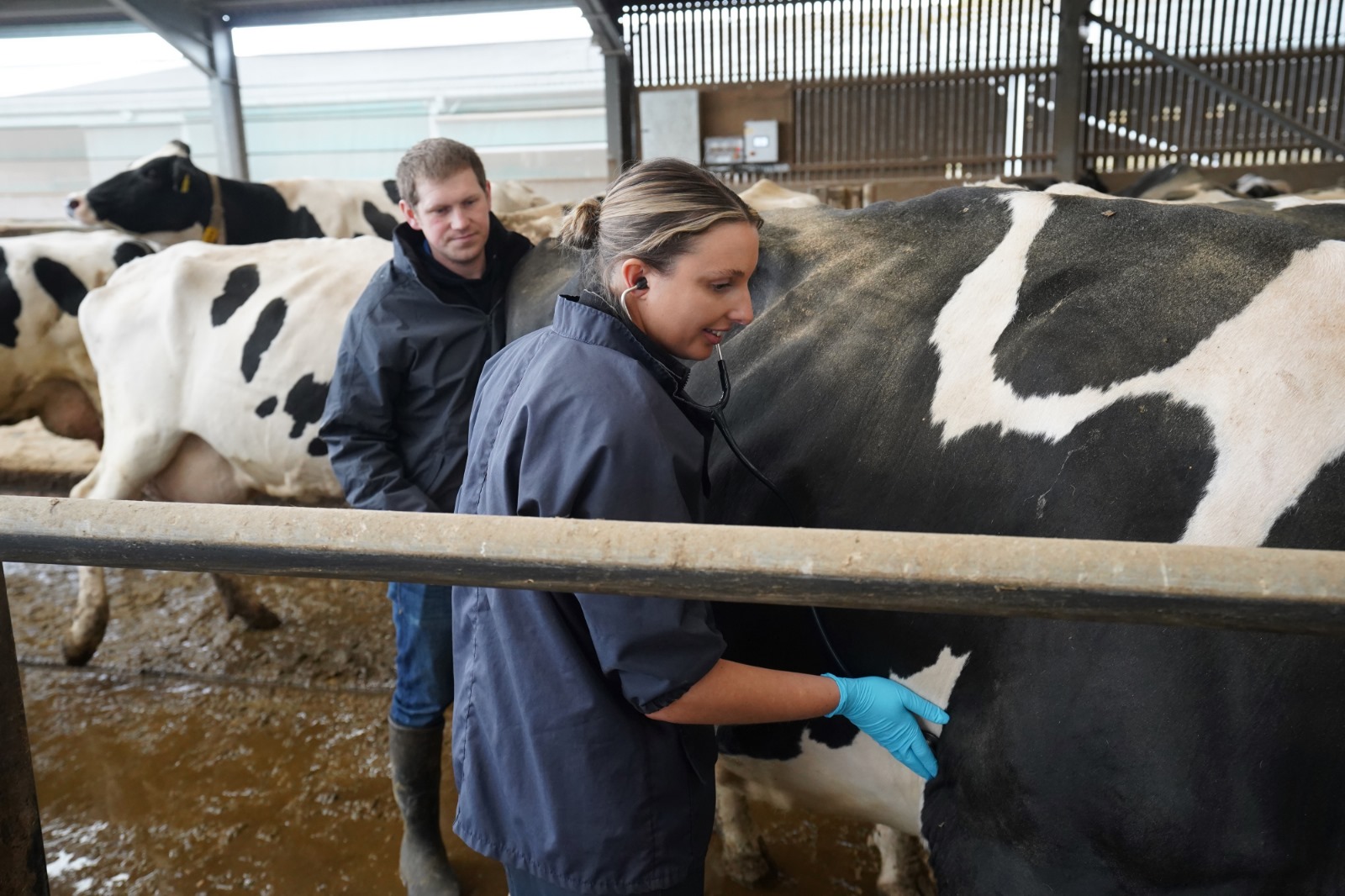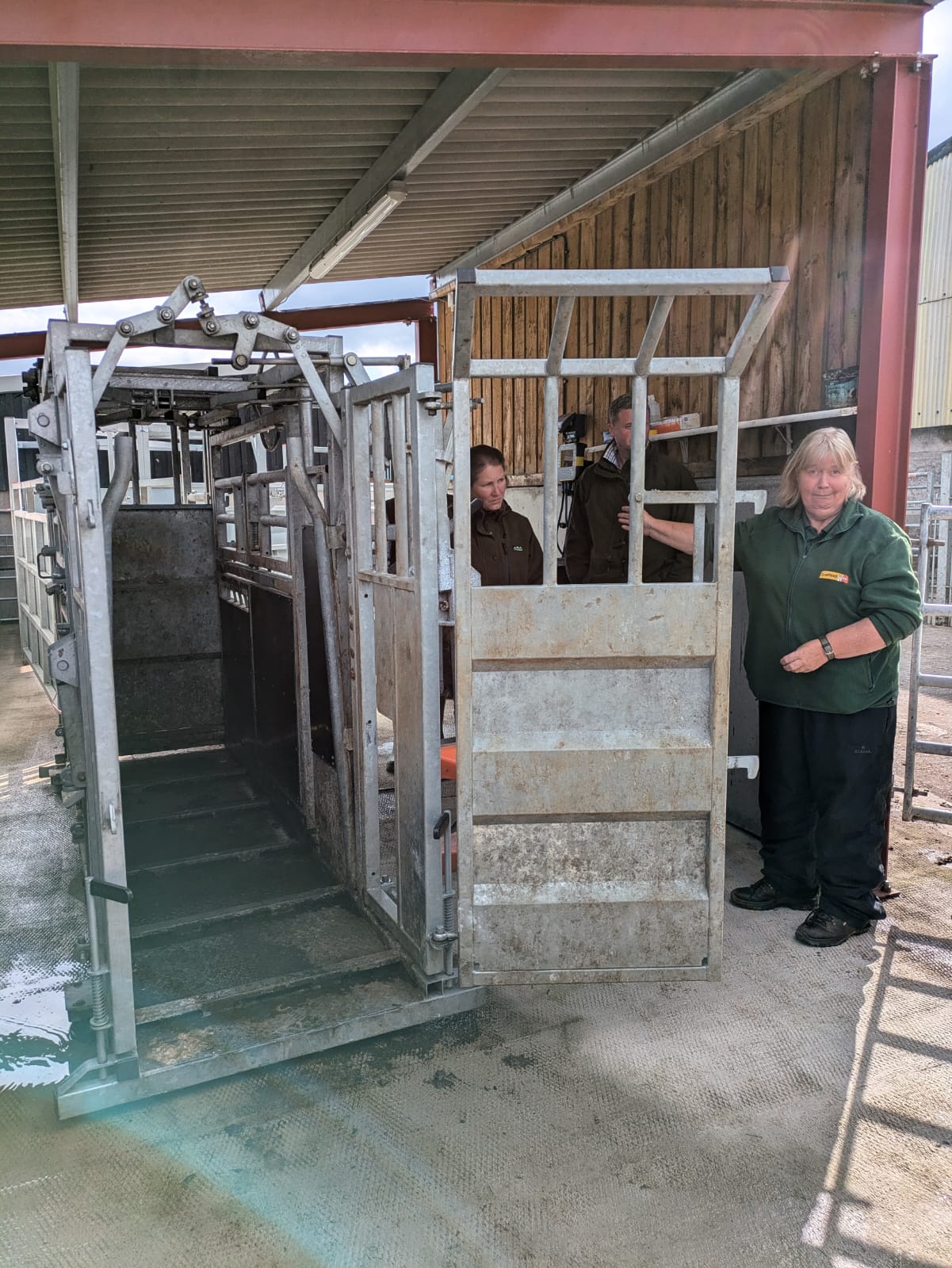
Bluetongue Update
We wanted to give you an update you on the latest Bluetongue situation – 20/02/2025
The restricted zone has now extended to include Dorset, parts of South Somerset, and additional areas of Wiltshire. Currently, we remain just outside of the restriction zone, meaning there are no movement restrictions for animals. This zone may however extend over the coming weeks.
For the latest updates and a detailed map of the restricted zone, please visit: APHA Interactive Bluetongue Virus Map
Clinical Signs of Bluetongue
Be aware of the following signs in your livestock:
- Lethargy
- Crusty erosions around the nostrils and muzzle
- Redness of the mouth, eyes, and nose
- Reddening of the skin around the hooves
- Nasal discharge
- Reddening and erosions on the teats
- Elevated temperature
- Milk drop and reduced appetite
- Abortion
Clinical signs tend to be more commonly seen in sheep than cattle, however both can be affected.
Movement Restrictions
If our area is moved into the restricted zone, the following rules will apply:
- General Licence: Allows movement of animals within a restricted zone to a dedicated slaughter market.
- Specific Licence: Required for movements not covered by the general license. Some movements may require pre-movement blood testing, which could be partially or fully funded.
For more information on movement licences and designated slaughterhouses, please visit: Bluetongue: news, information and guidance for livestock keepers – GOV.UK
Vaccination
Vaccines are now available in the UK to help reduce infection.
There are currently no treatment options for Bluetongue, therefore reducing spread of the virus through vaccination alongside movement restrictions are our only management options.
While vaccinated animals are still subject to movement restrictions, vaccination may reduce clinical signs and therefore the economic impact to your herd/flock. Please contact us if you’d like to discuss vaccination options for your farm.
Staying Updated:
We will keep you informed of any further changes to the Bluetongue situation. However, for the latest information, please refer to Bluetongue: news, information and guidance for livestock keepers – GOV.UK
If you have any questions or would like to discuss this in more detail, please give us a call.

Parasite Control – What to consider at housing?
Parasite Control – What to consider at housing?
Housing time is a great opportunity to manage any parasite burdens on cattle. It is important to treat with the right product at the right time.
Questions to consider before deciding to treat:
- Do I have this parasite on my farm?
- Are my animals currently infected?
- Will the drug I want to use work for these parasites?
The four main parasites we need to consider at housing and how to test for them:
1 – Gutworm (Ostertagia):
All cattle at grass will pick up gut worms, however they can develop a strong natural immunity to ostertagia after just two grazing seasons, so younger animals are at higher risk. The most common signs of gut worms are scour, reduced weight gain and inappetence.
Testing: Faecal egg counts are useful at grass, especially in younger animals but can’t always tell the number of inhibited larvae over the house period. Blood testing younger animals at the time of housing for pepsinogen levels can be used to try to assess the overall worming status on the farm.
2 – Lungworm
Lungworm main signs are coughing and difficulty breathing. Cattle are most of risk of lungworm disease in the late summer and autumn and is more common in wetter areas. They will develop natural immunity if they are exposed to small amounts of lungworm each year, however vaccinating can enhance this immunity.
Testing: If clinical signs are seen, faecal samples can confirm the diagnosis, but treatment is often needed urgently. We can also test via blood testing or confirm diagnosis via postmortems.
3 – Liver Fluke
This can infect both cattle and sheep and there is no natural protective immunity, so all ages of cattle can be infected. Fluke usually appears on the pasture from late summer through the autumn and into winter, however with the recent unpredictable weather, the appearance of liver fluke has become less reliable to predict.
Testing: Blood samples from calves at the time of housing or faecal sampling for all age groups can be used. Only the adult stages can be detected on a worm egg count, so where negative, re-testing can be done 4-8 weeks later.
4 – Lice
There are four different species of lice commonly found on cattle, but they can simply be split into either sucking or biting lice. All housed cattle will probably be exposed to some lice over the winter period but cattle that are unwell or on poor nutrition are more likely to show signs, which can include hair loss and intense skin irritation.
Treatment: If lice are seen, then examining these under the microscope to see if they are biting or sucking lice is useful to determine which treatment is needed.
There is a wide variety of products on the market and are many types of applications such as spot-on, pour-ons, injections and drenches. It is important to choose the correct product for the parasite you are choosing to treat or prevent.
Please give us a call to speak to one of our vets or Harriet on 01373 451115 if you would like to discuss which products you need or if you are interested in a bespoke worming plan for your farm.

Bluetongue Virus
An update on Bluetongue virus (BTV-3) 📣
The evolving situation regarding the virus in Somerset and Wiltshire mainly involves monitoring and management of the disease in livestock. Bluetongue is a viral disease transmitted by midges and affect ruminants, most notably sheep, leading to significant health issues and economic impact.
Be aware that not all infected animals will show clinical signs of the disease, and signs in cattle tend to be more subtle than those in sheep. Clinical signs include:
- Ulcers or sores in the mouth and nose
- Discharge from the eyes or nose
- Drooling
- Swelling of the lips, tongue, head and neck
- Lesions around the coronary band
- Reddening / crusting of the teats
- Lameness
- Lethargy
- Inappetence
- Fever
- Milk drop
- Abortion, foetal deformities and stillbirths
- Death
As of the 4th October, the restricted zone and infected area has been expanded to include most of the East of the UK:
- Bedfordshire
- Cambridgeshire
- City of Kingston upon Hull
- East Riding of Yorkshire
- East Sussex, Essex
- Greater London
- Part of Hampshire
- Hertfordshire
- Kent
- Part of Leicestershire
- Lincolnshire
- Norfolk
- Part of Northamptonshire
- Nottinghamshire
- Suffolk
- Surrey
- West Sussex
More locally, such as in Bath and Northeast Somerset, individual cases have also been identified outside of the restricted zones. These were cases in which infected animals were moved from their original farm where the virus was circulating. All infected animals have been culled, and those premises are under restrictions. Testing is ongoing to ensure there has been no further local spread. In terms of livestock sales, animals can be moved from restricted zones under license, however must undergo testing pre- and post-movement.
The current strain of bluetongue – BTV-3 – is different to the previous strain that has occurred in the UK – BTV-8. Previous vaccines have only protected against this original strain. A new vaccine is therefore available to use under a general licence for farms within the high-risk area, or under a specific licence for those farms outside the high-risk counties. It is a suppressive vaccine, in that it reduces the severity of clinical signs of infected animals, but does not offer protection from infection.
If you would like any further information please do not hesitate to call the practice on 01373 451115 or check out the Bluetongue resource hub: Home – Ruminant Health & Welfare (ruminanthw.org.uk)

Farming Resilience Funding
We have an exciting new opportunity for Farmers to receive up to £1500 of funding to go towards vet visits without having to complete any admin or pay any of the cost.
What is it?
Defra’s Farming Resilience Fund was created to provide business support to farmers in the first few years of adapting to agricultural transition. Farms that have received direct payments since October 2022, can access this support, free of charge. It is designed to help support the right business choices for the future to ensure the farm business thrives without Basic Payment Scheme (BPS). This funding is aiming to bridge the gap between the SFP going and the full launch of the Animal Health and Welfare Review.
Is my farm eligible?
All you need to do is supply us with your SBI number and farm details (name, address, etc.) to check your eligibility and we will do all the admin work from there. The same farm can receive funding from both the Resilience Fund and the Animal Health and Welfare Pathway.
What does it include?
Each farm can receive up to £1500 per farm for up to four visits (£385/visit) and all services are designed to help optimise health and productivity. Services could (but are not limited to) include:

If you are interested in this opportunity, please let us know your SBI number on 01373 451115 and we will submit an eligibility check.

Safe & Effective Handling of Cattle
Miriam Parker MBE joined the team at Wyvern Farm Vets and a group of eager farmers to discuss the safe handling of cattle. See notes from the meeting below:
It is worth starting at the basics and that is thinking of the:
- COW
- PERSON(S)
- HANDLING FACILITIES
Consider the dominance of animals within the herd and ask the question, are animals unpredictable?
- A bull with surging testosterone- Unpredictable
- Group of cycling heifers- very unpredictable
- In-calf cows- more predictable
- Yearling steers- fairly predictable- no testosterone surging!
Always consider cows due to calve or freshly calved as HIGHLY UNPREDICTABLE!
Instinct
TIP: At TB testing consider putting the bull through early in the test with groups of in-calf cows. He is a dominant figure in the herd so if you relate to the wild, he would be near the front 1/3 of the pack but protected by “leaders” in front of him.
Cows are herd animals so they naturally want to be with each other. There is a social order within the established herd/group.
TIP: It is far easier to divide cattle up into smaller groups to move and handle as they have more space and there is less likely to be a dominant figure as they don’t have time to “reorder/regroup”.
Learnt behaviour
Cattle are creatures of comfort and routine. They have strong “place association” so they will remember for example if each time they go through the crush they have a negative experience e.g. injected or poked.
TIP: Consider running animals through the handling system/crush regularly so they don’t always associate it with something negative.
Senses
Smell: studies show that animals can smell adrenaline and cortisol (released when stressed) in the urine and dung of other animals.
Hearing: Any novel sounds are likely to alarm cattle but particularly higher pitched sounds.
TOUCH: Positive touch points are: head, neck and tail head (think about where animals touch each other). Animals can be desensitised by touching too much so consider backing off.
Petting animals can seem cute but these animals are not so cute when they grow and try to bowl you over. Every time you touch a “pet” you should ensure that you put down a marker to make them stop on your terms so that you remain as the “dominant”.
Vision: Dichromatic= two colour receptors: yellow and blue with good night vision. Monocular vision with limited binocular vision at the front causing poor depth perception. They are usually 0.75cm away from an object/wall when they think they are right next to it. That is why a longer crush is beneficial- a cow will think it has reached the end before it has!
There is a blind spot right behind the cow- so consider this when walking up behind a cow!
Cattle have left eye lateralisation: meaning they prefer to move and turn to their left.
TIP: When adding heifers to the parlour they may well prefer the right side so that they can keep an eye on the handler and pit with their preferred LEFT eye.
Person
Cattle can differentiate between people/handlers.
TIP: Keep calm, don’t rush, avoid complacency and follow your instincts.
Clear differences in behaviour towards animals when expecting a different outcome e.g. call cattle to you but do not use the same behaviour to move them away from you when in handling system.
High pitched sounds in particular are alarming to cows: Miriam did ask us to bear this in mind if arguing before or during a test as our voices will naturally become more shrill as we get more agitated!
Handling facilities:
Race and handling systems should be designed to allow the natural flow to the left. Stockboard or sheeted gates help to focus and direct the animal and reduce distractions.
Holding pens should be long and narrow and lead on to circular crowd pens with solid sides allowing cattle plenty of room to turn and follow one another up the race. It is good to have the handler on the left of the animals as this works with their left eye preference.
TIP: Race entry should have one straight side and the other at 30° to aid vision up the race.
Raceways should be built on a gentle curve or in a straight line with at least two straight cattle lengths before the first turn.
Handling systems should be tall enough to keep cattle in safely, Miriam suggests the rule:
“Over the head of the biggest animal in the herd with their head in an upright position”
Animals should not be kept in a race for longer than 8 minutes so consider the number of cattle you load up in the race compared to the time it will take to complete the task.
Whenever handling cattle make sure you consider your EXIT strategy:
- UNDER,
- OVER,
- BETWEEN or
- BEHIND
Take time to look at your handling system and watch the cattle moving through it. Note areas where animals stop or are difficult to move; Is the floor uneven, is the turn too sharp? Consider how and where changes can be made to improve the overall cattle flow.

Colostrum
COLOSTRUM
New-born calves are reliant on colostrum until the immune system develops in the first couple of months of life. Colostrum provides antibodies crucial for protection against conditions such as scour and pneumonia.
The ‘5Qs’ are key to ensure that youngstock get the best start in life:
- Quantity: Give the first colostrum feed of four litres, or 10% of bodyweight, within four hours of birth, followed by a further two litres within 12 hours of birth.
- Quality: Good quality colostrum contains at least 50 g/L of IgG antibodies. Colostrum quality varies enormously between cows, so test quality every time with a colostrometer or BRIX refractometer.
- Quickly: Colostrum quality decreases 3.7% every hour after birth and a calf’s ability to absorb antibodies directly into its bloodstream only lasts a few hours so colostrum must be harvested quickly.
- sQueaky Clean: Good hygiene is essential when harvesting colostrum. At room temperature bacteria numbers can double every 20 minutes. If colostrum becomes contaminated, calf’s uptake of antibodies falls and can lead to sickness.
- Quantify: Reviewing colostrum management on farm is important to make sure calves are receiving the benefit of good quality colostrum. A colostrum protocol should evaluate colostrum quality and calf’s immune state.
If you have any questions or would like to discuss colostrum management, please give the practice a call on 01373 451115 for more information.

Lungworm
Have you thought about lung worm yet this year?
We have recently identified an increase in lungworm cases over the last few weeks. Outbreaks of lungworm (Dictyocaulus viviparus) are unpredictable, however disease is most commonly observed in the late Summer and early Autumn. Young cattle in their first grazing season are at the highest risk of disease, although older cattle can also become infected.
Lungworm causes infection in the respiratory tract and is typically characterised by a “husk” cough, although other clinical signs also include:
🪱 Rapid / difficulty breathing
🪱 Drooling
🪱 Loss of condition
🪱 Standing with an outstretched neck
🪱 Fever – in cases of secondary bacterial infection
🪱 Sudden death – in severe cases
Prevention and control include:
🪱 Vaccination prior to turnout provides short-term immunity until longer lasting cover develops through exposure at grazing
🪱 Avoid grazing young cattle in known contaminated pastures
🪱 Monitor at risk / suspect groups via faecal samples
🪱 Anthelmintic treatment in the face of an outbreak
If you are worried about lungworm, give the practice a call on 01373 451115 for more information.

Heat Stress in Cattle
The critical temperature for cows is around 29• and their rumen is constantly producing heat. The risk also increases when the humidity is high.
Knowing the signs:
• Panting and increased respiratory rate
• Reduced feed intake
• Reduced rumination
• Reduced milk yield
• Increased SCC
• Increased rectal temperature
Reducing the risks:
• Provide plenty of shade and access to water
• Switch on fans or increase their speed or try to turn out to any windier fields where possible
• Only handle cattle at cooler times of the day
• Minimise the time spent in holding pens or their walking distance between parlour and fields if possible
• Have water sprays or sprinklers on
Clip hair off backs
• Ensure they have adequate fly prevention on as fly infestations can make the cows bunch together more
Other things to consider:
• The heat also causes an increased risk of mastitis
• Worm larvae can become trapped in faeces during the hot and dry weather. Beware that when the rain returns, it could cause a release of larvae on to the pasture leading to outbreaks of PGE (Parasitic Gastroenteritis)
• Blue Green Algae: Pay attention to fields with ponds or fields where the water troughs haven’t been used for a while. Make sure all troughs are regularly checked and that you can see to the bottom
If you have any concerns or questions, please give our team a call on 01373 451115.

